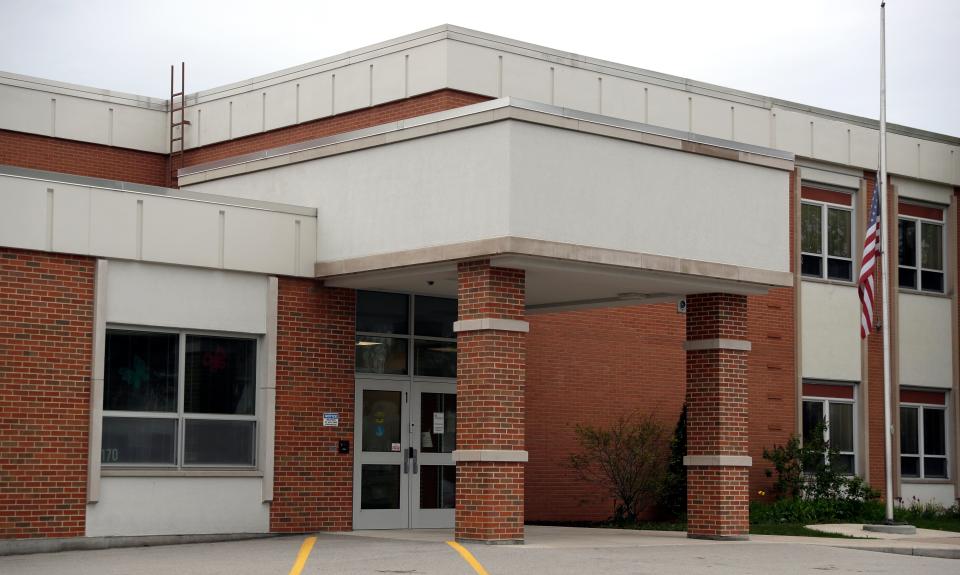Why is Green Bay closing schools?
GREEN BAY — The Green Bay School District is looking at closing about a quarter of its schools over the next few years as it grapples with a multimillion dollar structural deficit.
How did it get here?
Declining enrollment
In Wisconsin, the number of students attending school is a huge source of funding for public school districts. Simply put, fewer students means less money and more students results in a larger cash flow.
In the Green Bay School District, enrollment has been declining since 2016.
The district went from 21,149 students in the 2016-17 school year to 18,922 last year, according to the Department of Public Instruction's enrollment numbers. The DPI collects enrollment on the third Friday in September, so actual district enrollment may vary throughout the year.
Statewide, enrollment in Wisconsin's public schools has decreased, particularly during the 2020-21 school year when many schools were still virtual because of the COVID-19 pandemic. Enrollment dropped statewide by 3% that year. In Green Bay, enrollment dropped by 5%.
Private schooling, home schooling, open enrollment into other districts and a declining birthrate all contribute to a smaller student population. The district's declining enrollment is expected to continue.
With fewer students, the district has less money for its operations.
Too many schools with empty seats
Green Bay has 40 schools and two charter schools. For comparison, the Appleton Area School District, which has 15,270 students, has 22 schools and 14 charter schools.
With Green Bay's declining enrollment, it's running schools that are, in some cases, not even half full. Keller Elementary, which is recommended to close, is 49% full, based on last year's enrollment numbers.
More on closures: 11 schools are slated to close in Green Bay. Here's how the GBAPS task force chose them.
Tank Elementary is 30% full, and Doty Elementary is at 70%. Those schools are also recommended to close.
If the district makes no changes, it estimates that within a decade enrollment will be at 67% of the district's "ideal capacity," on average. The district calculates the ideal capacity of a building as 90% of the maximum a school can hold.

By closing and consolidating schools, the district plans to bring building enrollments up so schools are operating closer to their full capacities. Fewer schools allows the district to save money on utilities, staff and maintenance.
"It is very costly to operate schools that are not full. That's just what it comes down to," said district Chief Operating Officer Josh Patchak at a January school board meeting.
Aging buildings require more maintenance
Many Green Bay school buildings are historic, with some nearing 100 years old from the date of original construction. Having so many older buildings contributes to higher costs of maintenance.
Elmore Elementary School, built in 1939, is among those recommended to close. It needs $4.6 million in maintenance, according to estimates by ATSR, the district's architecture consulting firm. Keller Elementary was built in 1970 and needs $6.9 million in maintenance.
More: Green Bay School Board to vote Oct. 23 whether to close 2 elementary schools
With the current number of buildings, it would cost the district over $400 million to maintain all of them for the next 30 years, according to ATSR.
A steep dropoff in funding as costs rise
Like many districts in Wisconsin, Green Bay has been using federal pandemic relief dollars, known as ESSER funds, to supplement its operating budget for the last few years.
The district received $72 million in both federal and state aid to help offset the costs of the COVID-19 pandemic and student learning loss. That funding runs out next fall, leaving the district with a $7.5 million funding gap for the 2024-25 school year.
Using the one-time funding for ongoing costs puts districts in a position where they must seek revenue elsewhere, like through referendums, or make cuts.
Last year's 8% consumer price index also strained district finances. School district revenue has been falling behind costs for years. In fact, revenue limits, which cap how much revenue a school district can generate, haven't kept pace with inflation since 2009.
Had revenue limits kept up with inflation over the last decade, districts could have raised up to $3,200 more per student, according to 2022 memo from the Legislative Fiscal Bureau obtained by the Press-Gazette.
Under the recently passed state budget, districts like Green Bay have an additional $1,000 in revenue they can generate per student, about a third of what would be needed to offset inflation.
As costs rise and enrollment declines, the district is left with less money and a ticking clock to make cuts by next year.
Danielle DuClos is a Report for America corps member who covers K-12 education for the Green Bay Press-Gazette. Contact her at dduclos@gannett.com. Follow on Twitter @danielle_duclos. You can directly support her work with a tax-deductible donation at GreenBayPressGazette.com/RFA or by check made out to The GroundTruth Project with subject line Report for America Green Bay Press Gazette Campaign. Address: The GroundTruth Project, Lockbox Services, 9450 SW Gemini Drive, PMB 46837, Beaverton, Oregon 97008-7105.
This article originally appeared on Green Bay Press-Gazette: Why is Green Bay closing schools?

